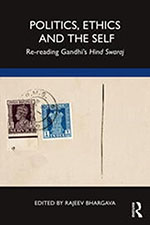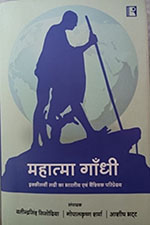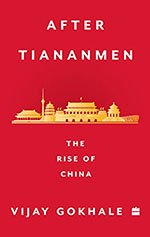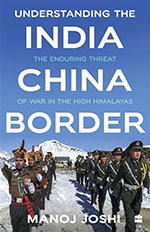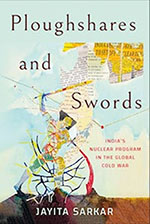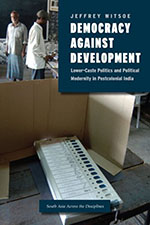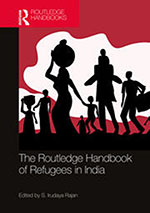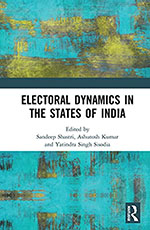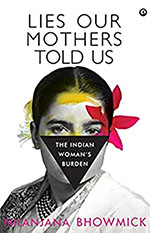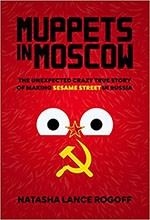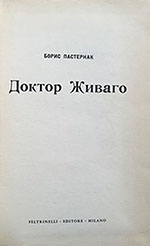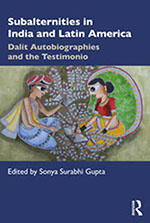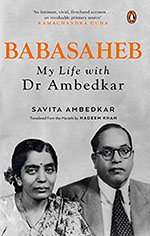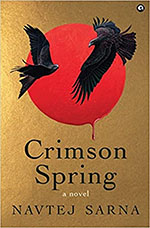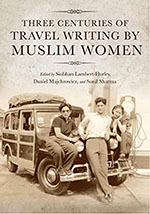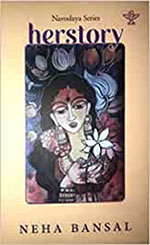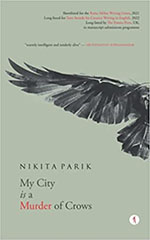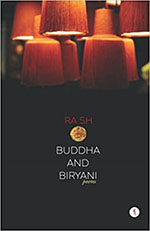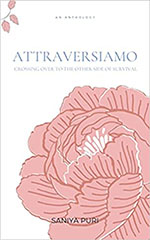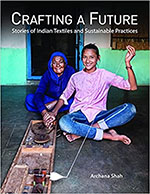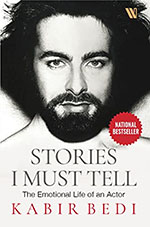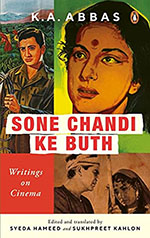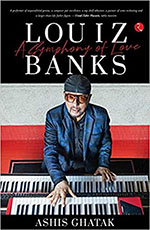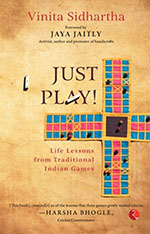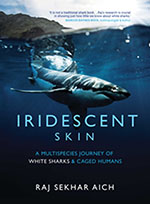Hind Swaraj is one of those key texts published in the twentieth century, which on the one hand, were denounced by many critics, and on the other hand, attracted many scholars and activists, who have been working for an alternative model of modernism. The book was criticized by many scholars, including the first Prime Minister of India due to its so-called ‘outdated’ ideas. However, in this book, Gandhi critically evaluates modern civilization and technologies related to it and questions the modern conception of religion, nationalism, and the prevalent violence-based method to counter the unjust and exploitative system.
Archives
February 2023 . VOLUME 47, NUMBER 2The book under review, written in Hindi, is a compilation of research papers that were presented as part of a two-day national seminar held to celebrate the 150th birth anniversary of Mahatma Gandhi at the M.P. Institute of Social Science Research. Titled, ‘Mahatma Gandhi: 21vi Sadi ka Bharatiya evam Vaishvik Pariprekshya’, the seminar was held in Ujjain. There are twenty essays in this book written by various Gandhi scholars. Each article focuses on a particular facet related to Gandhi and his world view.
China’s unprecedented rise has forced the world to restudy and refocus on the major factors behind this development. The Deng Xiaoping era is considered to be the time when China moved out of the trap of a low-income agrarian society to becoming the factory of the world and the second largest economy. The reform and opening up announced by Deng in late 1978 gave China the direction which it needed to gain momentum.
Both the authors need no introduction to the public attentive to strategic matters. Between them, they have fifty years of engagement with strategic affairs. Both have past publications that place them in good standing as readers appraise whether they should pick up their latest wares. While Joshi’s landmark book was on Kashmir—The Lost Rebellion—in the nineties, Sawhney’s co-authored one—The War Unfinished—was on the India-Pakistan crisis of early this century.
Jayita Sarkar’s book traces the origins and development of India’s nuclear weapons programme in the context of overlapping narratives of postcolonial modernity, developmentalism and geopolitics. Sarkar achieves this explanation by way of highlighting the technopolitics binding developmentalism and national security in the vision of its technopolitical elite which conceived and ran India’s nuclear programme.
2021
First published in 2013 from the University of Chicago Press, this book is one of the most important interventions into comprehending Bihar, an eastern Indian province. With reference to post-1947 Bihar, among the western scholars, Francine R Frankel’s essay (1989), many long essays of Harry W Blair, and Paul Brass, too, in his book, Language, Religion and Politics in North India, and also his essay, ‘Political Uses of Crisis: The Famine of 1966-67’ (Asian Survey, 1986)
Stateless were we branded and stigmatized…as outcaste vagabonds at the bottom we remain, with shattered and bleeding hearts we leave, like dumbed cattle benumbed we go (p. 247). The apathy and difficulties in the lives of refugees and stateless people are innumerable, and there will never be enough words to describe their predicament’s severity adequately.
With the establishment of a new dominant party in India since 2014 and its re-election with a thumping majority in 2019, a new political era has been identified with the BJP being called a ‘system defining party’. A lot has been written about the changing political climate of the country with the Bhartiya Janata Party as the dominant party in order to analyse the reasons for the BJP wave sweeping across the nation.
The issue of gender in India is a complicated one—a society that is marked by a dividual sense of individuality—the ‘woman’ may find herself diluted in the various roles and versions that threaten to drown her and her voice, and surely even her desire. The struggle for being acceptable, needed, and valued may be so intense that it is seen to be bargained for one’s own sense of self. It is going to be difficult to review a feminist writing without bringing in all the other authors who have so prolifically written on the subject, but I am going to stick to the book at hand.
In the year of the historic moon-landing, American children were gifted with the educational programme on television named Sesame Street. It revolutionized children’s television in the US and soon became one of the brands of ‘American Values’ in the polarized world. The affectionate muppets in the show were symbols of love, tolerance and cooperation; but above all, they were believed to have inculcated the spirit of individuals’ freedom and dignity amongst school children.
Mention ‘Dr Zhivago’ and people will recall the 1965 blockbuster movie, not Pasternak’s novel published in 1958. Not surprising, because the movie focuses on the emotive love story. The book, on the other hand, reveals the complexity of the events of that tumultuous period in Russia’s history (from 1905 to the Second World War) and their influence on human relationships.
Autobiography is a genre of literature where an individual narrates his/her own life to others through the act of writing. Generally, this is done by the privileged to display their inherent superiority and worthiness to other members, less worthy. Even when personalities from minority or disadvantaged groups are recognized, the standards of evaluating the life of these individuals might be reinforcing the dominant group’s evaluative criteria.
Dr Sharda Kabir, better known as Savita Ambedkar, was Dr. BR Ambedkar’s second wife. There exist conflicting narratives among various circles of the Dalit public sphere, which is deeply suspicious of Mai Saheb’s (as she was fondly addressed) role in Babasheb’s life and more so in his death. I remembered an anecdote while reading this extremely engaging book under review.
If we write novels so, how shall we write History?’ asked Henry James, the masterly American writer of the nineteenth century. The question remains pertinent each time one confronts a historical novel, especially in the context of India where the official narrative rendered by the colonial authority sketched only one side of events.
The adage ‘It takes a village to raise a child’ could not be more apt to describe the collaborative nature of a project the scope of Three Centuries of Travel Writing by Muslim Women. A team of translators, researchers, experts, and advisors helped the editors assemble, order, and arrange the travel accounts of the forty-five authors included in the compilation. They selected accounts written across the seventeenth to the mid-twentieth century, from diverse languages and locations including Arabic, English, Indonesian, Punjabi, Turkish and Urdu.
Between Heaven & Earth is an exhaustive compendium authored by contemporary literary stalwarts and travellers who utilize descriptive writing to produce pages of text reminiscent of Shansui paintings. Bulbul Sharma’s and Ruskin Bond’s cataloging incorporates a plethora of voices, and echoes of the past. The reader is treated to Ruskin Bond, Khushwant Singh, and Keki Daruwalla alongside Bill Aitken, Jim Corbett, Thomas Munro and Rumer Gooden.
2022
It is a tragic irony of our times that the cultural space for poetry is fast shrinking in our midst, and so are its readers and/or publishers. Known to us, humans, as one of the most primordial and also sublime forms of self-expression, poetry is moving out of our lives, almost imperceptibly. Sadly enough, the poetry that speaks the real language of the human heart, doesn’t appear to have many takers, at least, in our hyper-real times.
It is difficult to review this book, as the smooth writing tempts you to pause and ruminate on techniques used, which inspires you to attempt a few pieces. Nikita Parik’s poems are lessons in creative writing. Both My City is a Murder of Crows, and her debut collection Diacritics of Desire, are important reads for emerging poets working on their craft. Invariably, Parik will teach them concise writing.
Dazzlingly unpredictable, Ra Sh’s recent collection of poems, Buddha and Biryani, constructs a world of perception that is playfully irreverent but trenchantly real. The poet, known for his seductively tantalizing referentiality of erotica in The Architecture of Flesh (2015) and The Bullet Train (2019), strikes the raw chords of the readers again.
The cover of this slim volume of poems is of a flower blossoming and the uneven lines drawn on every petal sets the tone for the ideas that are enclosed within its spaces. On first glance, one is not prepared for what follows inside the book. The stereotypical set of ideas pertaining to flowers and colour schemes that one has been conditioned to, and the way one casually looks at the surface, does not prepare us for the powerful assemblage of poems that will shake you to your core.
Archana Shah’s Crafting a Future—Stories of Indian Textiles and Sustainable Practices is organized in three sections—the story of cotton, the story of silk, the story of wool—along with a foreword by Laila Tyabji, an introduction, an afterword, appendices I and II, acknowledgements, photo credits, bibliography, and an index.
At the outset I must confess that I have never been a Bollywood aficionado and that I have not ever seen a film where Kabir Bedi had acted. Yet, I find his life, vignettes of which he has sensitively narrated in his memoir, unusually interesting, sometime even profound. In fact, after completing the book that mixes adroitly the profane with the sacred, I feel tempted to know more about him.
If the advance praise of the book is written by Amitabh Bachchan, Shabana Azmi and Professor Ira Bhasker one can assume the book is going to be good, given that it has been appreciated by actors in the popular area as well as in the critical arena, plus by an academician. And, so it turns out to be. There is something for everyone who is interested in Hindustani Cinema to take away from this book.
Remember Kasiee Paheli Zindagani from the movie Parineeta? Sanjay Dutt drives the ladies of the house out to a Night Club in Calcutta. Glasses clink, horns and keys come alive as Rekha ascends onstage—and in a red sari she puts a spell on you. Another reference would be Arun Bhai and Meenakshi Mehra from A Suitable Boy and sultry Calcutta evenings providing for a heady mix of jazz and yearning.
The book showcases several traditional games of India—their origin, structure, rules and style of play. In addition, it has extrapolated how these games depict the larger moral values of human life. In this endeavour, the author has sub-divided the book into appropriate sub-themes which enable the reader to grasp its core tenets.
Sharks have maintained an enduring allure in culture. Powerful, magnificent and terrifying—they capture the imagination of audiences, artists, and researchers alike. Yet, this fascination combined with our fear of the unknown has an ongoing impact. A large number of shark species are threatened with extinction.Raj Sekhar Aich is a marine anthropologist and social scientist who studied shark cage-diving by living in New Zealand where the great white shark is classified as ‘vulnerable’.

